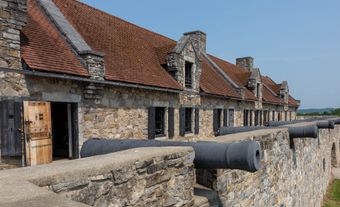Victoria Settlement, 15 km south of Smoky Lake, Alta, was first established in 1862 by the Reverend George McDougall as a Methodist mission.

Situated on the North Saskatchewan River, McDougall initially hoped to attract the local Cree to the mission, but soon the settlement also included many English-speaking Métis . Most were of mixed English or Scottish and Cree backgrounds, and Victoria's location allowed them to balance bison hunting with some subsistence farming. The settlement developed as a river-lot community, with the same distinctive narrow parcels of land stretching back from the river as were found at the Red River Colony.
In 1864 the Hudson's Bay Company opened a post at Victoria to serve the local population. The population continued to grow slowly, and by 1887 a small townsite began to develop around the HBC post and McDougall's church. When a post office opened, the community was named Pakan after a local Cree chief. Pakan served as a steamboat and ferry landing and as a stopping place on the Victoria Trail, which ran along the north bank of the river from Edmonton. Although the community received a new influx of settlers after 1900 when a number of Ukrainians took up homesteads in the area, Pakan entered a long period of decline in 1918 when the railway went through the nearby community of Smoky Lake.
Today the Victoria Settlement Provincial Historic Site includes a clerk's residence built by the HBC in 1864 and the 1906 Pakan Methodist Church. The site is open to the public from mid-May to early September.

 Share on Facebook
Share on Facebook Share on X
Share on X Share by Email
Share by Email Share on Google Classroom
Share on Google Classroom

